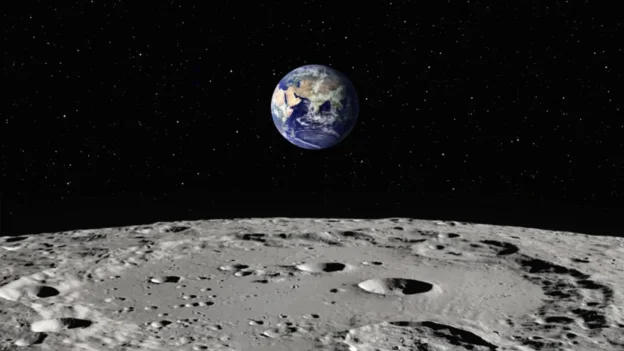A group from the French National Center for Scientific Research, led by astronomer Arthur Briaud, has revealed new details about what’s inside the inner core of the MoonIn addition, the scientific community continues to explore the secrets of the solar system, with a particular focus on the structure of the Earth and outer space.
What is in the inner core of the Moon?
In their study, the researchers present evidence of the similarity between the interior of the Moon and the Earth in terms of constituent elements and the distance from the center of the core to the crust. This finding provides a more detailed view of lunar geology.
In the journal Nature, it was published that the inner core of the Moon is solid and has a radius of 258 km. The researchers determined that the density of this deep region is approximately 7,822 km/m3, a figure close to the density of iron, the main component of the Earth’s inner core.
These results, Briaud explains, confirm the discoveries made by NASA in 2011 during the Apollo Program, which suggested the existence of an inner core similar to that of the Earth. Briaud stresses that this similarity has significant implications for understanding lunar evolution.
Evidence of a magnetic past on the Moon
The journal Nature also notes that the Moon once had magnetic fields, generated by motion and convection in its inner cores. Understanding the composition of the lunar interior is crucial to discovering why these fields disappeared.
Likewise, the study supports the theory of an intense lunar bombardment in the first billion years of the solar system. During the Apollo Projectsmall magnetic fields were detected on the lunar surface, suggesting a stronger magnetic influence in the past.
To analyze the composition of the Moon, scientists use seismic data. The acoustic waves generated by earthquakes make it possible to examine the inner material of a planet, creating a detailed map of its structure.
During the Apollo missions between 1969 and 1972, seismic data were collected from the Moon. However, the technological limitations of the time affected the duration of the missions and the placement of the seismometers, complicating the analysis of small seismic movements.
To overcome these difficulties, Briaud and his team have turned to laser experiments, finding an efficient way to study the Moon. They have investigated aspects such as the degree of lunar deformation due to gravitational interaction with the Earth, the variation in its distance and density.
Future research could focus on the study of other moons in the solar system, including Europa and Ganymede of Jupiter, which could also reveal crucial secrets about the formation and evolution of celestial bodies.
Follow us on social networks and don’t miss any of our publications!
YouTube LinkedIn Facebook Instagram X
Source: larepublica
Photo: Shutterstock

